It’s not just Chief Wahoo. Why American Indian images became potent, cartoonish advertising symbols
In 1792, Thomas Jefferson, then serving as secretary of State, designed a medal to be given to foreign dignitaries upon their departure from the United States. To represent our fledgling country, Jefferson picked the image of an indigenous woman in a feather crown — making the oldest official symbol of the U.S. an American Indian.
Ever since then, American Indians have been repeatedly employed as symbols of nationhood, culture and business.
An American Indian appears on the official seal for the city of New York and the county of Los Angeles. American Indian symbols and names appear on missiles (the Tomahawk) and helicopters (Apache). Not to mention baking powder, bullets and butter — that pert Land O’Lakes maiden beckoning from the dairy aisle.
Indigenous people have also materialized, quite controversially, as the mascots of sports teams. This includes the notorious Chief Wahoo, of the bulging features and forced grin, who has served as emblem of the Cleveland Indians since the 1940s. After years of criticism, the team announced this week that it would do away with the logo in 2019.
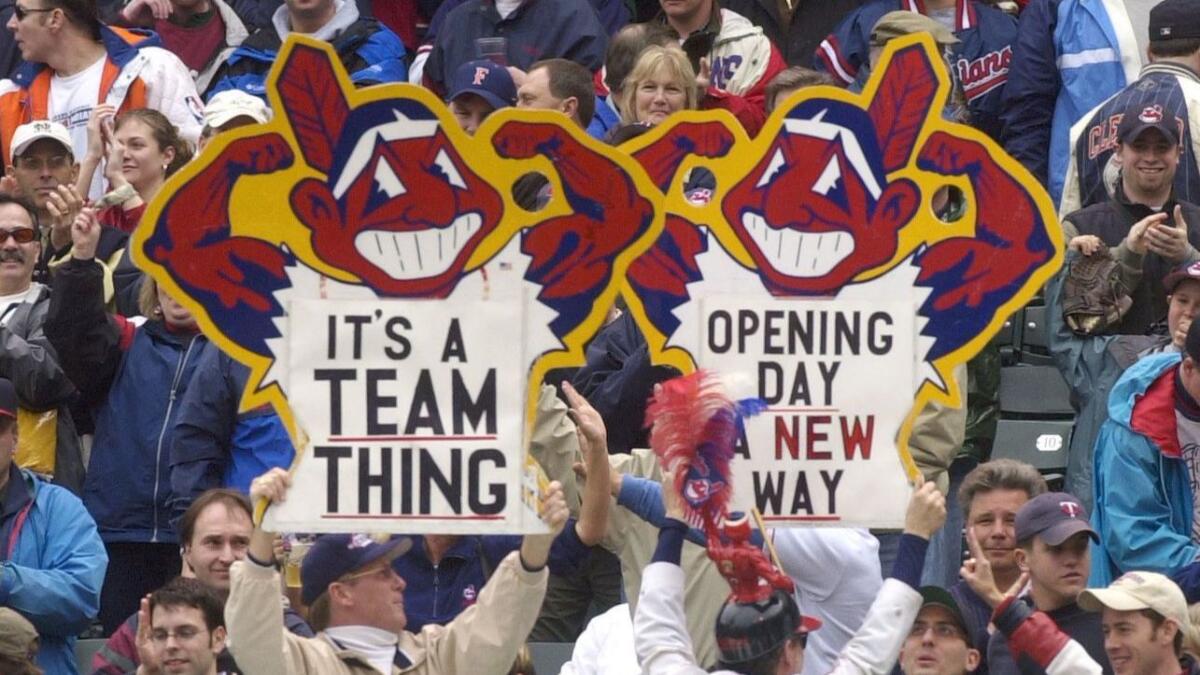
How American Indians came to personify so many U.S. cultural phenomena is at the heart of a new long-term exhibition at the Smithsonian’s National Museum of the American Indian in Washington, D.C. Titled “Americans,” the show looks at how these depictions came to be so pervasive in a country where American Indians represent only 1% of the U.S. population.
“Many Americans have no interaction with American Indians,” says Paul Chaat Smith, who co-curated the exhibition with Cécile R. Ganteaume, “yet they do know these images and symbols really well and have emotional connections with them.”
A central gallery, which serves as the exhibition’s spine, gathers examples of the ways images of indigenous people have been employed over the centuries: early government seals, fruit crate labels, a Native Barbie doll, an Indian brand motorcycle and even the aforementioned Tomahawk missile. It’s part of the phenomenon that Smith describes in his 2009 book, “Everything You Know About Indians Is Wrong,” in which the American Indian became “a kind of national mascot.”
From this central space, a series of side galleries radiate out and provide an in-depth look at the historical events that gave some of these symbols their prominence.
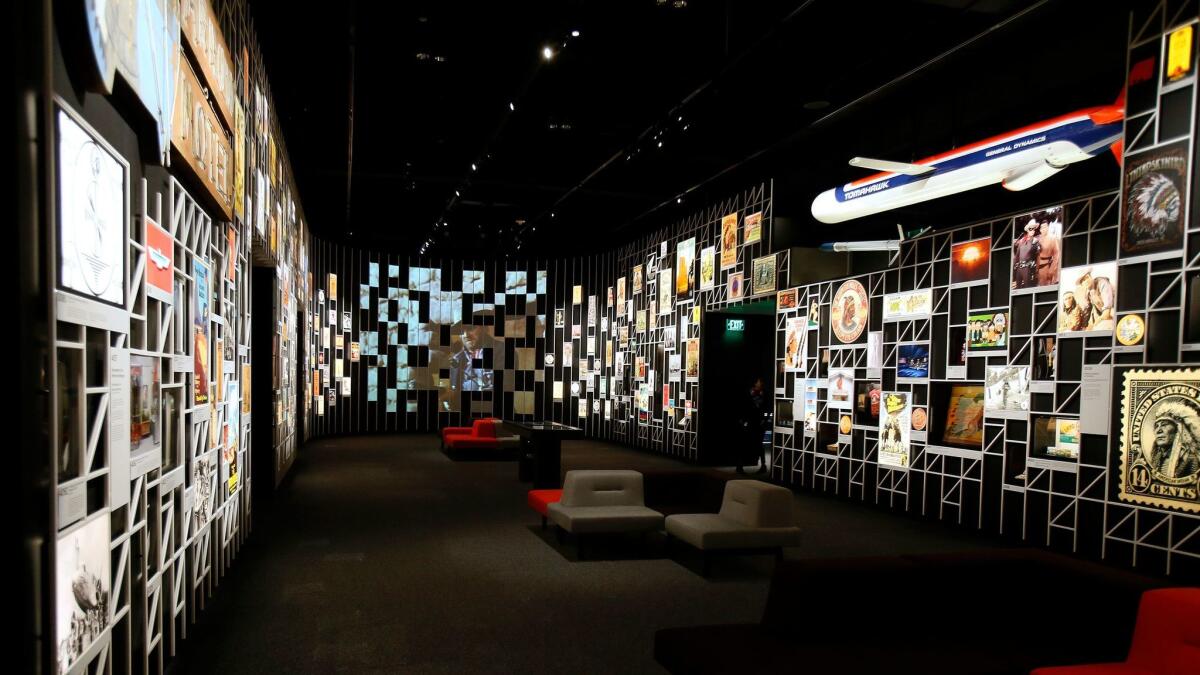
“It’s looking at how those events entered the national consciousness and lingered there, and how, over time, they entered the popular culture,” says Ganteaume, who is also the author of the highly informative companion book, “Officially Indian: Symbols That Define the United States.” “We are walking the visitor through a shared history that is the history of the country.”
That shared history is wildly complicated. It is one of brutal dispossession, moments of triumph, curious celebrity and a historical narrative that has over time inextricably woven together the Indian with the American in ways that are both meaningful and spurious: the Indian Removal Act, the Battle of Little Bighorn and the tale of Pocahontas, who over the centuries has evolved from key historical figure to Disney princess to racialized term employed by a sitting U.S. president in reference to a senator’s purported Native heritage.
“Things like Pocahontas, Trail of Tears, Little Big Horn — those are still in people’s heads in the 21st century,” says Smith, who is Comanche. “These events are a vibrant part of national life, and they allow us to make the argument that these were huge consequential moments in American life.”
Pocahontas, for example, who lived four centuries ago, remains a pivotal figure — one whose story of abduction, conversion and untimely death makes for an apt metaphor for colonialism. An entire gallery in “Americans” recounts her place in our national narrative.
She is best known for an event that “likely didn’t happen,” notes Ganteaume: throwing herself on Capt. John Smith in the moments before his execution, thereby sparing his life. That story — accurate or not — places Pocahontas at a foundational moment in U.S. history.
“Early Americans associated her with saving the life of Capt. Smith, and they saw her as saving Jamestown,” adds Ganteaume. “So Pocahontas becomes a foundress of the country with early Americans.”
In the civic temple of the United States, where the two legislative bodies meet, [Pocahontas] is there.
— Cécile R. Ganteaume, curator
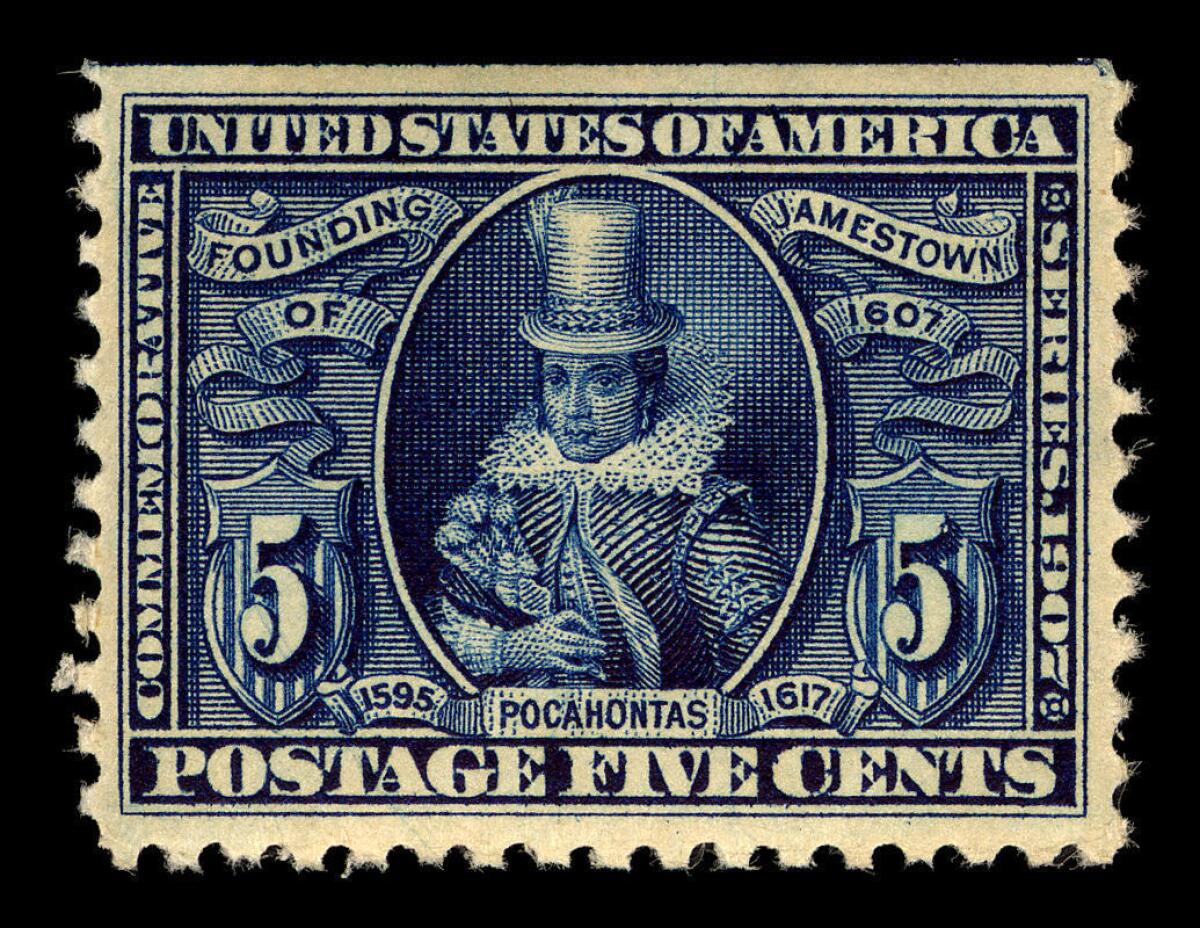
Pocahontas is depicted no less than three times in the rotunda of the U.S. Capitol building — more than any other historical figure. This includes a place in a sculptural wall relief, in a large painting of her baptism and in the all-important Frieze of American History, which depicts key events in U.S. history (such as the Battle of Lexington and the discovery of gold in California).
“In the civic temple of the United States, where the two legislative bodies meet, she is there,” says Ganteaume.
American history as we know it, in other words, wouldn’t exist without the American Indian. And it’s partly why the figure of Pocahontas continues to have currency — popping up on lip balm, as an action figure and in film. Not just by Disney, but by auteurs, too. She is at the center of Terence Malick’s 2005 drama “The New World.”
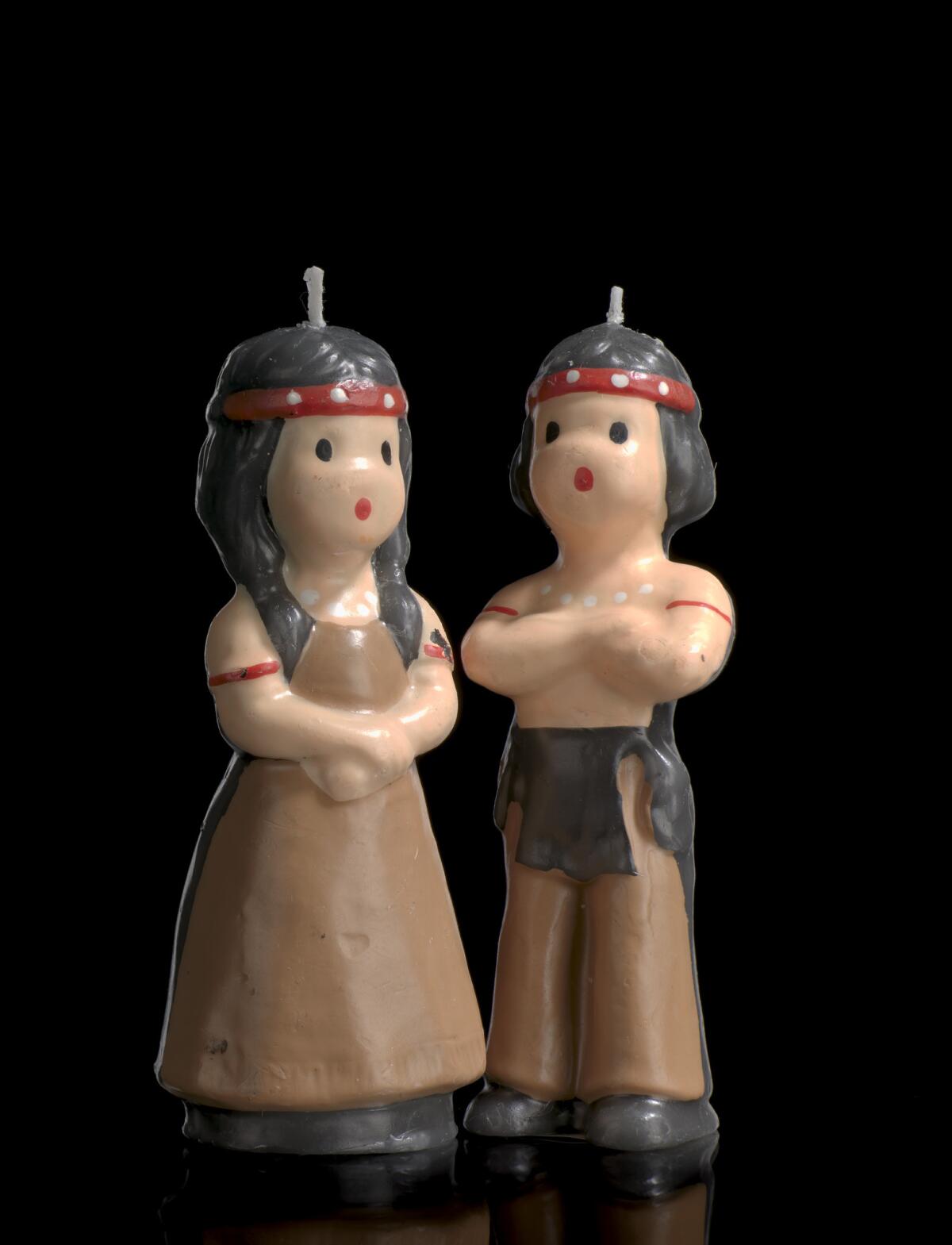
Other historical events have also been key to forming the image of American Indians we hold in our heads.
One of the most significant of these was the Trail of Tears, the forced relocation of Cherokee and indigenous people from other tribes to lands west of the Mississippi in the 1830s — a move that resulted in grim internment camps and the deaths of thousands during the long journey West.
The Trail of Tears remains with us in curious ways. It is a potent symbol of Native dispossession. But it has also been adopted into the language as a way of describing a difficult journey — sometimes ironically. (Like the Atlanta Falcons fans who hashtag their team’s path to the Super Bowl on social media as a #trailoftears.)
But as the exhibition notes, the Trail of Tears was just one tragic happening in a 28-year process put into motion by the Indian Removal Act, which was signed into law by Andrew Jackson in 1830. The act allowed the U.S. government to offer American Indians unsettled land in the West in exchange for territory in the American South, thereby making room for white settlers and the slave-powered cotton industry.
“The breathtaking ambition of the Removal Act was that it suggested that there could be a United States without Indians,” says Smith. “And it was couched in this egalitarian language.” (According to the act, Indians would be given “aid and assistance” and the government would “forever secure and guaranty to them and their heirs” the land they would be given out West.)
Jackson is the president who is most associated with the Indian Removal Act. But, as Smith notes, nine U.S. presidents helped oversee Indian removal: “It was a major federal project” — one that required massive investment and bureaucracy.
“Trail of Tears can be seen as a small tragic event that happened to Indians,” says Ganteaume, “versus something that happened to the whole country.”
As with Pocahontas, Indian Removal is the subject of its own gallery in “Americans.”
And it is made all the more stirring upon returning to the central gallery where, on one wall, you can gaze on a graphic of a 1960s cigarette pack emblazoned with a likeness of Sequoyah, the Cherokee silversmith who is best known for developing the Cherokee alphabet. Sequoyah died as he attempted to connect with a band of Cherokee displaced by removal. More than a century later, he had been transformed into a charming graphic on a pack of smokes.
The breathtaking ambition of the Removal Act was that it suggested that there could be a United States without Indians.
— Paul Chaat Smith, curator
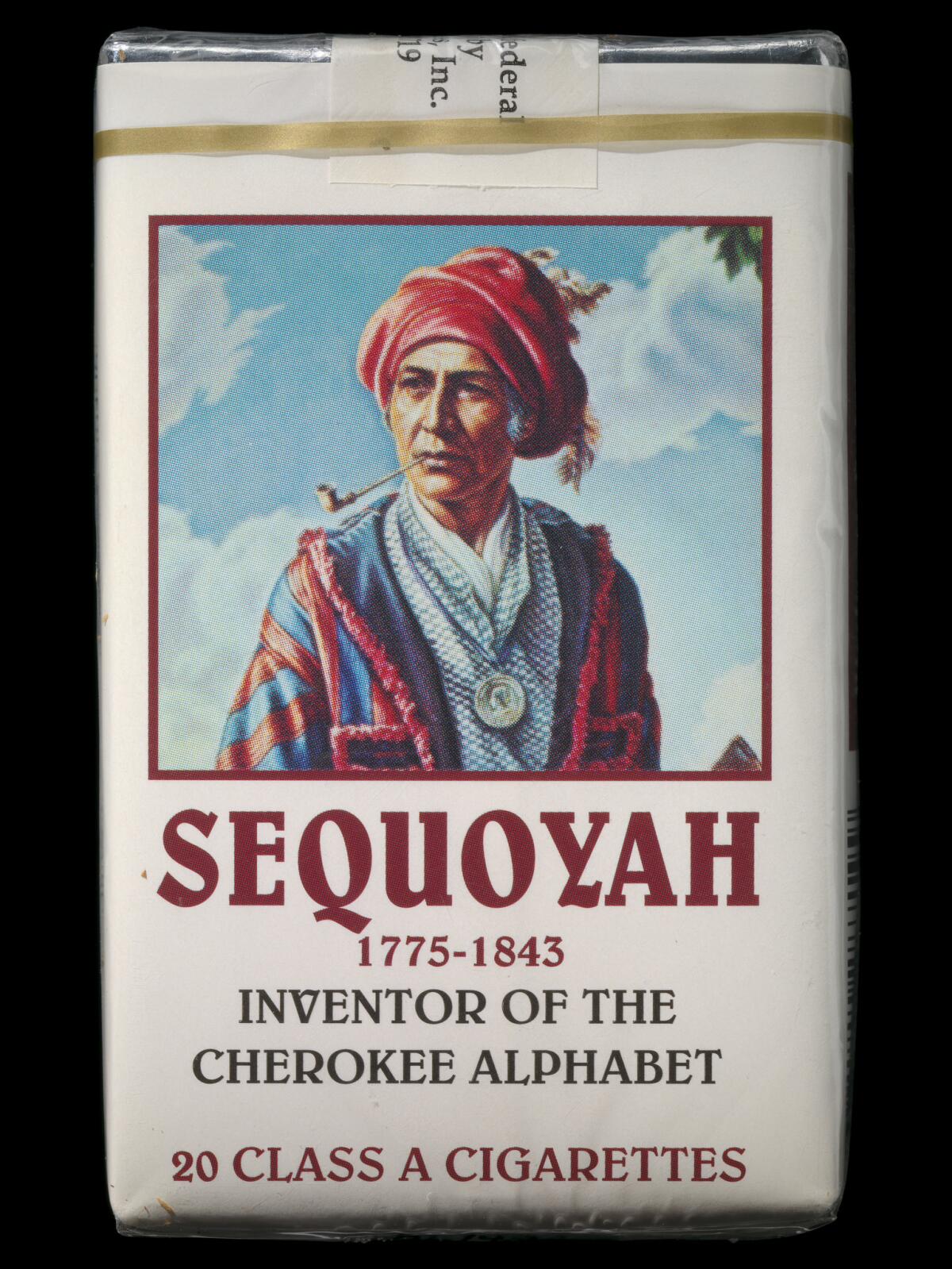
But the most common visual trope when it comes to American Indians is linked to the cultures of the Plains: the image of an Indian man in an eagle feather headdress.
That image has been featured on T-shirts, matchbooks, feed sacks, baking powder (the still-popular Calumet), hydraulic brake fluid, World War I Army uniforms, fruit company logos, the cover of Cher’s 1973 “Half Breed” album and pouches of chewing tobacco (Red Man — still going strong). There are countless others
“Americans” examines the pervasiveness of this image — along with it 19th century roots. Specifically, the Battle of Little Bighorn in 1876, in which battalions of Lakota and Cheyenne fighters laid waste to George Custer and the 7th Cavalry.
“News of that event stunned the nation for many reasons,” says Ganteaume. “The news reached most Americans as they were celebrating the centennial of the country, and it came as an absolute shock. Custer was a Civil War hero, and his entire regiment was wiped out.”
And, notes Smith, it generated “this sense of remorse about manifest destiny, that settlement was an ugly business and how are we supposed to feel about it?”
The story of the Army’s staggering defeat had the result of turning Indians connected with battle — such as Crazy Horse and Sitting Bull — into sympathetic celebrities, all aided by the rise of technology such as the telegraph, four-color printing and photography.
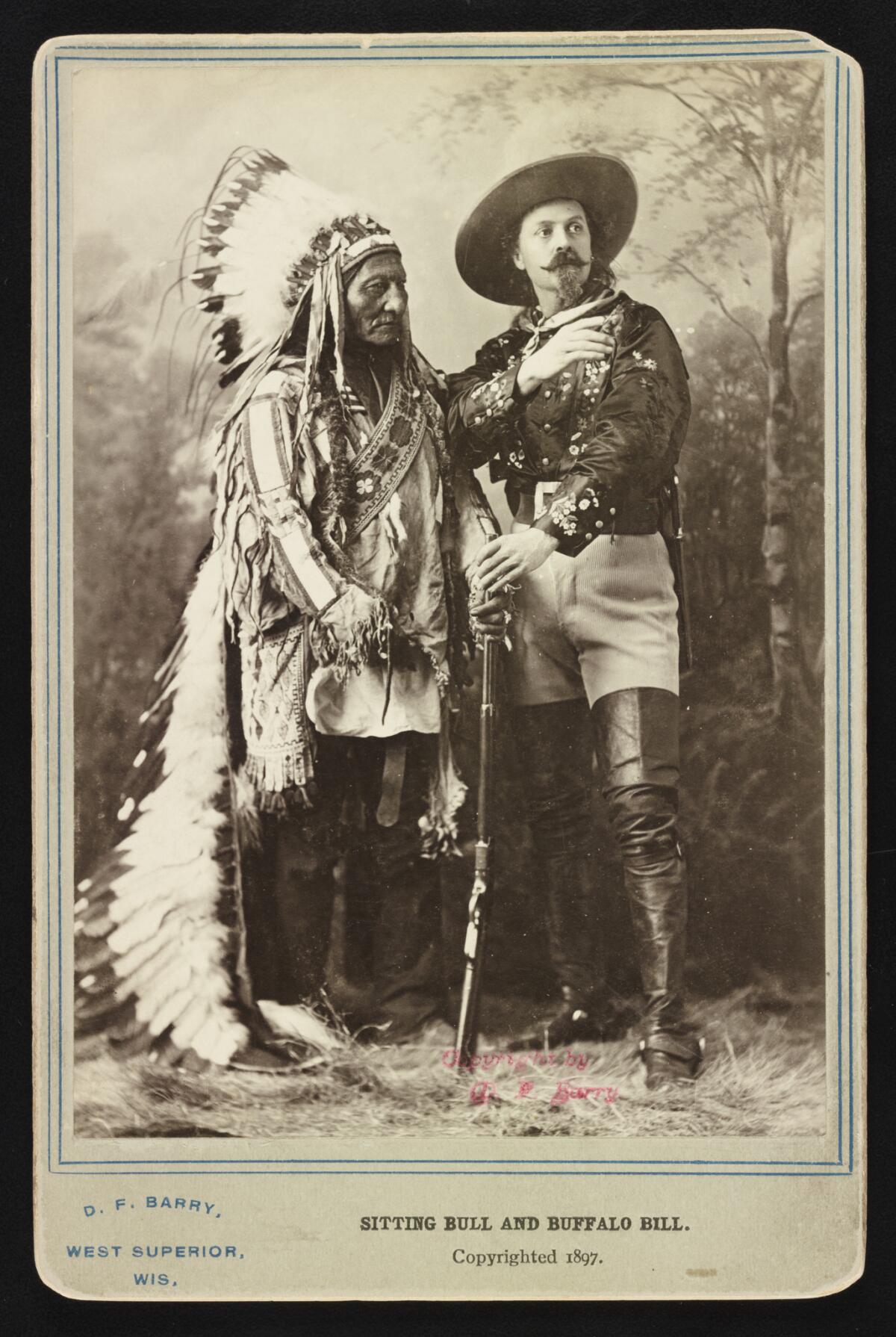
Sitting Bull was photographed in an eagle feather headdress. And the look figured in Buffalo Bill’s popular Wild West show (of which Sitting Bull was a part), a spectacle that generated a cottage industry of printed posters, postcards and photography that frequently featured Plains Indians. As a result, the Plains Indian in an eagle feather headdress became a visual stand-in for American Indians everywhere. (“Americans” features various artifacts from the era, including a sumptuous Lakota headdress from 1880.)
The imagery — with its air of romance and regality — had another effect too.
“It really freezes American Indians in that,” says Smith — noting the ways in which U.S. society tends to view Native Americans as somehow existing more in the past than the present. “This is a unique thing the museum has always wanted to battle.”
By featuring the tropes at its heart, the “Americans” exhibition helps unravel them. And it is does so in ways that are both poignant and humorous.
At the rear of the main gallery, a video screen features clips from old westerns and TV shows, a record of the ways in which Hollywood has helped shape the concept of what is Native American. Included in the reel are clips from vintage American sitcoms.
“It turns out virtually every long-running sitcom on TV has an Indian episode,” says Smith. “There’s a ‘Brady Bunch’ episode. And there’s an episode of ‘The Munsters’ dressing up as Indians.”
These are often painful to watch. Sitcom Indians wear feathers and war paint and say mystical things in halting English. They are cartoons, like the brand logos all over the gallery. And, ultimately, less a portrait of American Indians than of the society that has yet to fully grapple with their place in our history.
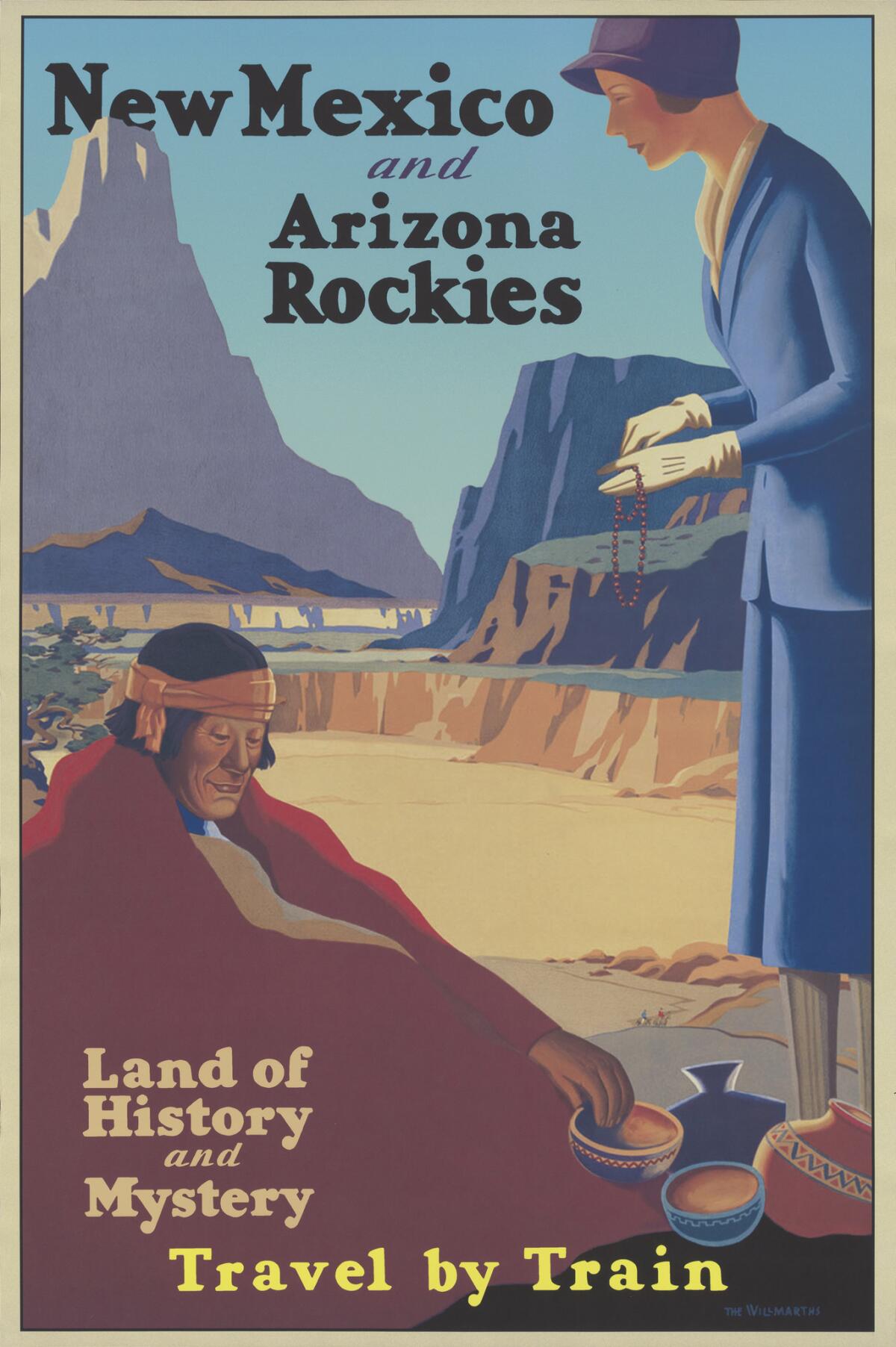
“Americans”
Where: National Museum of the American Indian, 4th Street and Independence Avenue, S.W., Washington, D.C.
When: Through 2022
Info: nmai.si.edu
Sign up for our weekly Essential Arts & Culture newsletter »
Twitter: @cmonstah
ALSO
A Mexican actor became a worker making less than $5 a day for art, theater and understanding poverty
Astrid Hadad, 'Lady Gaga of Nixtamal,' is part of thrilling start to PST's performance fest
L.A. artist Rodney McMillian peels back the facade on the ultimate symbol of power: the White House
UPDATES:
FOR THE RECORD
Jan. 31, 9:30 a.m.: An earlier version of this article stated that Crazy Horse was photographed in an eagle feather headdress. It is not known whether Crazy Horse was photographed in his lifetime.
The biggest entertainment stories
Get our big stories about Hollywood, film, television, music, arts, culture and more right in your inbox as soon as they publish.
You may occasionally receive promotional content from the Los Angeles Times.








